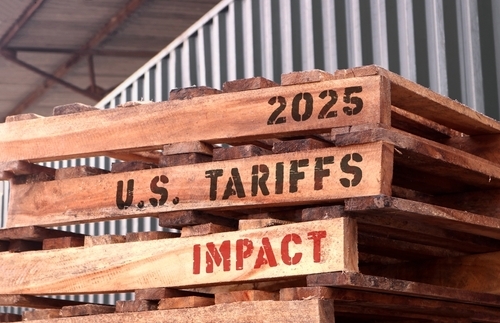Cookie depreciation is no longer a looming threat, but retail marketers still need to prepare for shoppers opting out of tracking.
Google’s recent announcement that it will not phase out third-party cookies gives retail marketers more time to adjust their marketing strategy and bolster their first-party data.
Cookie-based advertising allows marketers to track consumers across the web and then serve targeted ads to consumers. In fact, 49% of brands say their marketing strategy depends on data from cookies, according to an Adobe study of 2,841 global marketers in March 2024.
While browsers including Safari and Firefox no longer use cookies to track consumers, Google’s Chrome browser — which has roughly 66% market share, according to StatCounter.com — still does. In 2020, Google announced that due to privacy concerns, it would phase out cookies on Chrome. However, after pushback from advertisers and regulators, Google delayed its cookie deprecation deadline multiple times.
In July, Google announced it is scrapping its cookie deprecation plan in favor of allowing consumers to “make an informed choice that applies across their web browsing, and they’d be able to adjust that choice at any time,” according to Google’s blog. Google has not provided more details about how it will implement this change, such as a check box in Chrome’s settings, a link at the bottom of a webpage or a pop-up on each website.
How retail marketers react to the change
The announcement provides a much-needed reprieve for advertisers, said Nicole Fisch, senior vice president of marketing at direct-to-consumer baby products brand Lalo.
“Like many DTC brands, cookie-based advertising has historically been a significant portion of our media mix,” Fisch said. “However, over the past year, we’ve strategically diversified our marketing channels.”
Many brands have already been preparing for cookie deprecation, and like Lalo, Google’s announcement doesn’t change their plans. This is partly because marketers are still unsure of how many consumers will opt in, or out, of tracking.
“I expect a greater share of Chrome users than before will opt out of third-party cookies if Google presents them with the opportunity to do so,” said Lane Elleby, acquisition manager at web-only gifting merchant GiftsForYouNow.com. “I think Google’s third-party cookie phase out will still occur down the line once they’re confident they have a solution that satisfies both advertisers and privacy advocates.”
Plus, marketers have known about this change for four years and many have already implemented new strategies.
“We remain focused on our strategy to diversify away from solely cookie-based advertising,” Lalo’s Fisch said. “The decision by Google to maintain third-party cookies doesn’t alter our long-term perspective on the importance of first-party data and direct-to-consumer relationships. We believe that building strong connections with our customers is essential to the future of our brand, and we will continue to invest in strategies that support this approach.”
Retailers diversify their marketing channels
Some of those investments for Lalo are events, webinars and influencer partnerships. These investments are one-to-one engagements with shoppers, which builds a deeper connection to the brand, Fisch said.
“While these interactions may not offer the same scale as traditional digital advertising, we believe they are the key to building long-term brand loyalty and customer relationships,” she said.
Lalo also has expanded into retail chains Pottery Barn Kids and Bloomingdales, which has allowed the brand to reach a broader audience and reduce its reliance on cookie-based ads, Fisch said.
GiftsForYouNow.com has prepared for the change by implementing server-side tracking, Elleby said. This allows retailers to still collect browsing data via a website server, instead of via a browser.
Retail marketers bolster first-party data
Another way retail marketers have been preparing for the change is to bolster their first-party data.
Lalo spent the first half of 2024 building a foundation of first-party data with a recently launched loyalty program. Its loyalty program, The Lalo Clubhouse, offers exclusive perks and incentives to members.
“This has not only been effective in strengthening customer relationships but also has enriched our first-party data collection process,” Fisch said.
Then, retailers can use their own email data to market to shoppers.
“Email marketing represents a viable path for leveraging first-party data for audience segmentation and targeting,” Elleby said.
This is what toy and game manufacturer Exploding Kittens is doing as well, said chief operating officer Jed Paulson.
“Exploding Kittens has been focused on building first-party data primarily via email capture for several years, before Google’s announcement that they would phase out third-party cookies,” Paulson said. “This puts us in a great place to navigate changes that might occur across Google, Meta, or other digital platforms without impacting our business.”
No cookies means high value for first-party data
Many retail marketers have taken a similar approach in working to diversify their marketing mix to prepare for the cookie deprecation. While Adobe’s marketer study found that roughly half of marketers still rely on cookies for their marketing strategy, this is down from 75% in 2022. Plus, 28% of marketers said they spend 50% or more of their budgets on activations that rely on cookie-based targeting in 2024, down from 45% marketers spending 50% or more in 2022.
According to the Adobe survey, brands have shifted their resources toward other marketing channels, including:
- 62% plan to shift budget toward direct spending with platforms like social media
- 49% on activating first-party data
- 42% directly with publishers
If cookies were to go away, first-party data would become a lot more valuable, said Katherine Black, a partner at management consulting firm Kearney.
“If it were to go away, I would expect any channel that has scale and first-party data to pick-up share,” Black said.
“That has been one of the factors fueling the retail media spend trend, but not the only one,” she added.



